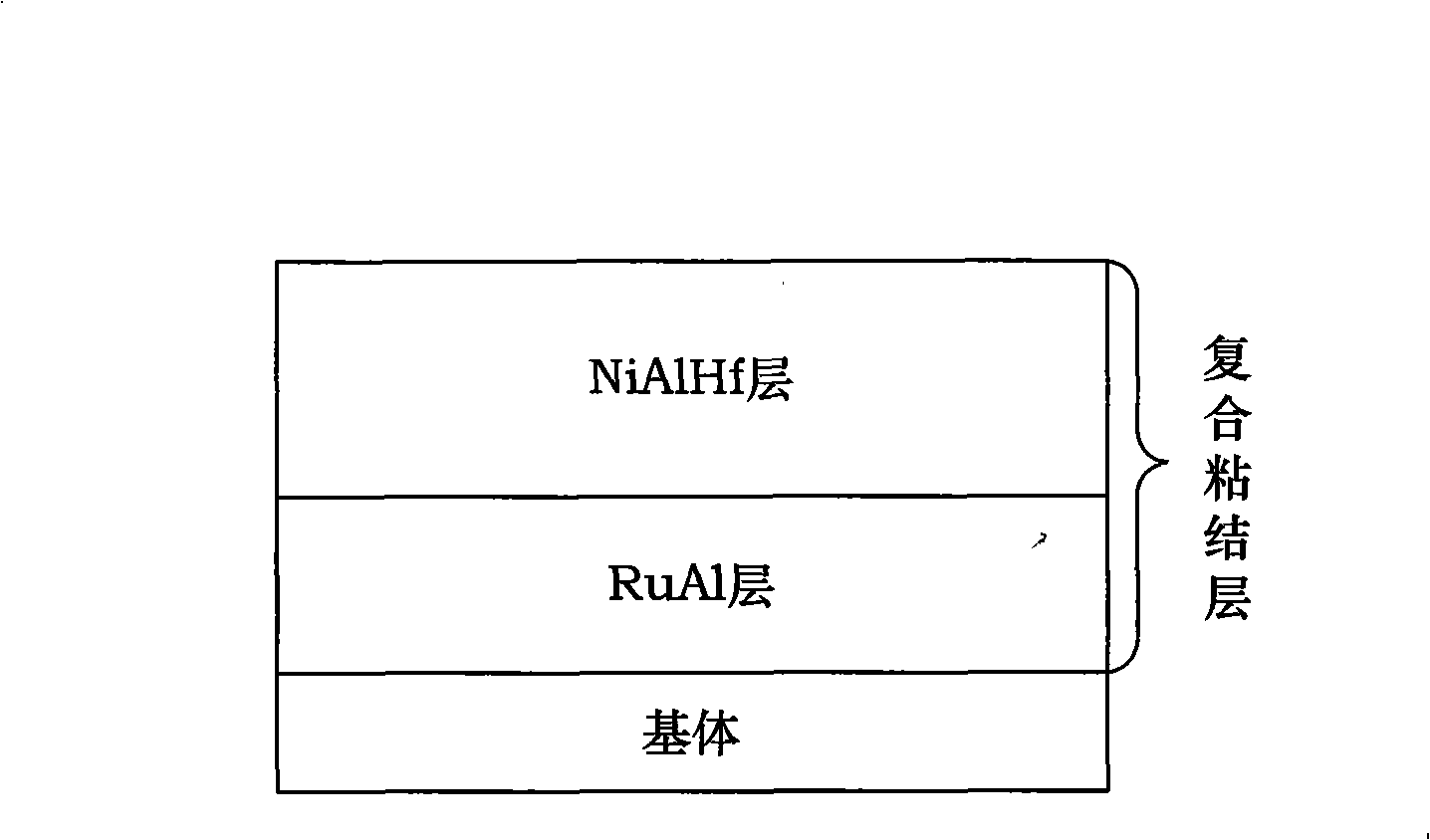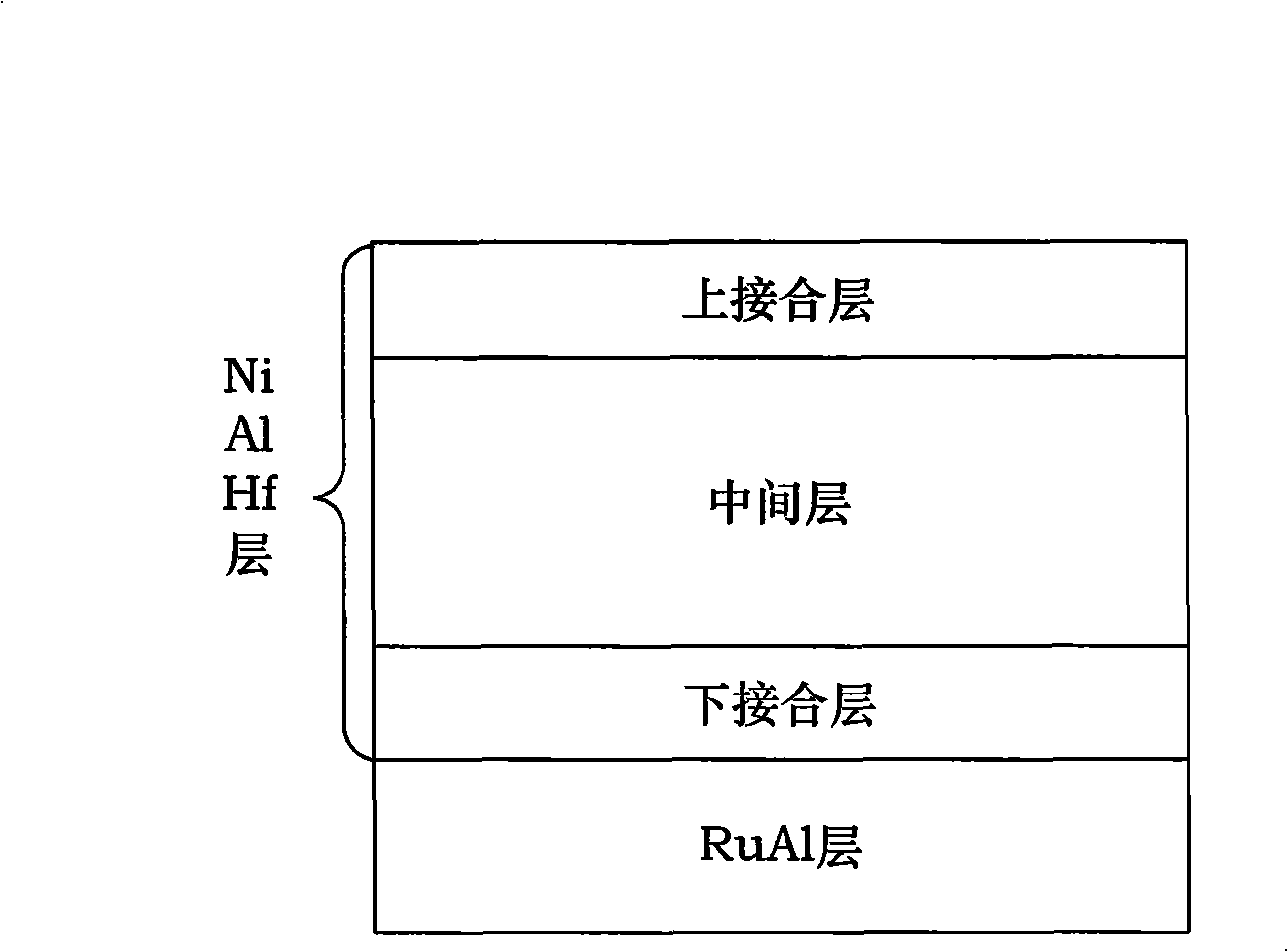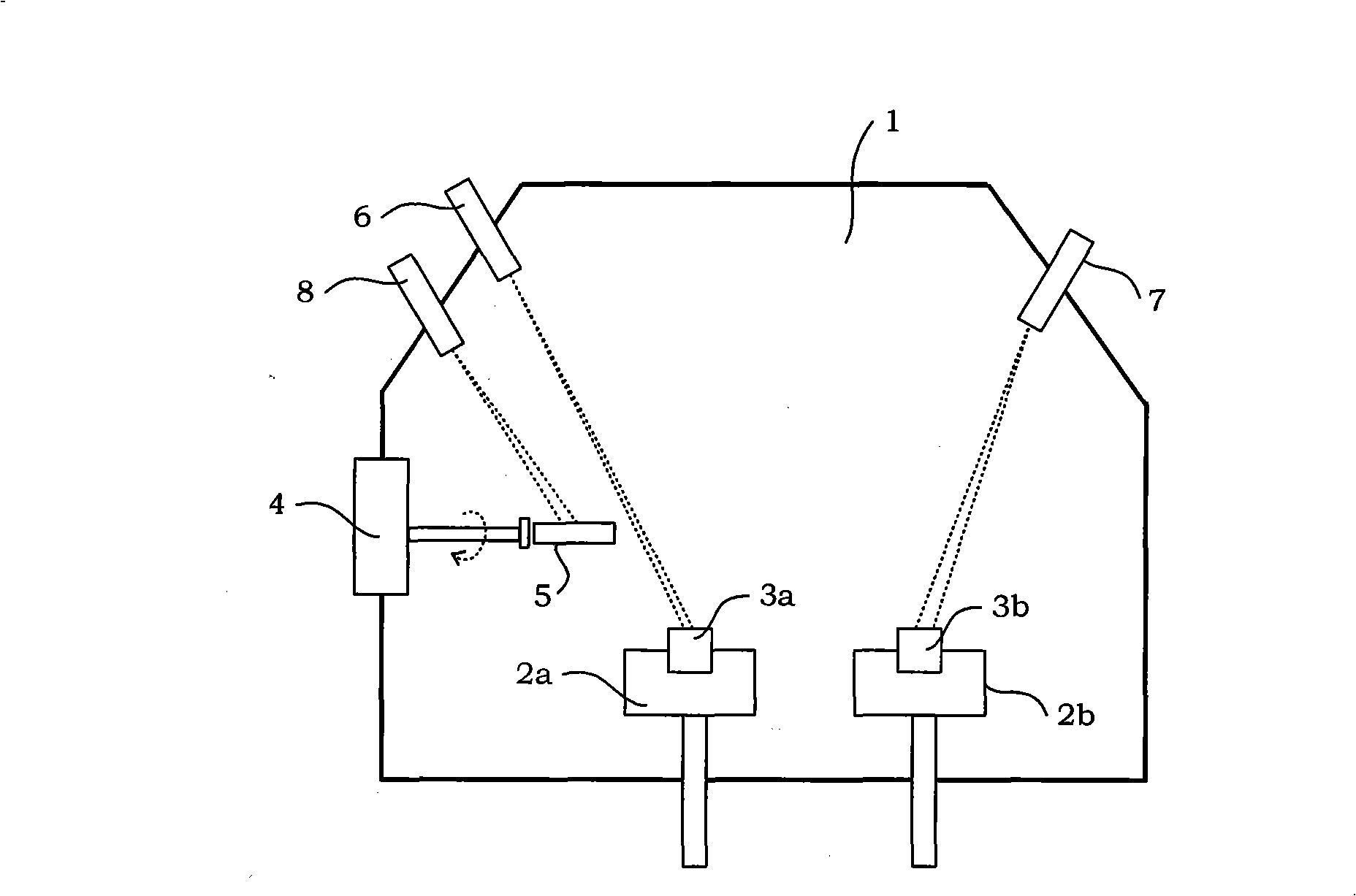Composite binding course material and method for producing composite binding course by using combination of plating and electro beam physics vapour deposition
A technology of physical vapor deposition and bonding layer, which is applied in the direction of metal material coating technology, superimposed layer plating, chemical instruments and methods, etc., can solve the problem of reducing the mechanical properties of ultra-high temperature alloy substrates, the decline of creep resistance, and the harmful TCP equal problem, to achieve excellent high-temperature oxidation resistance and avoid the decline of high-temperature mechanical properties
- Summary
- Abstract
- Description
- Claims
- Application Information
AI Technical Summary
Problems solved by technology
Method used
Image
Examples
Embodiment 1
[0112] The first step, substrate pretreatment
[0113] (A) The substrate is a Ni-based superalloy, the grade is K3, and the size is 8mm×9mm×3mm; each surface of the substrate is polished with 150#, 400#, and 800# SiC water abrasive paper to make the surface roughness of the substrate Ra <0.8;
[0114] (B) putting the substrate treated in step (A) into an alkaline cleaning solution at 60° C. for 5 minutes, and then rinsing it with deionized water for 3 times to obtain the first substrate;
[0115] The alkaline cleaning solution is composed of NaOH, Na 2 CO 3 、Na 3 PO 4 and deionized water, add 15g of NaOH and 15g of NaOH to 1L of deionized water 2 CO 3 and 15g of Na 3 PO 4 ;
[0116] (C) putting the first substrate obtained through the treatment in step (B) into 5% HCl for activation for 40 seconds, and then rinsing it twice with deionized water to obtain the second substrate;
[0117] The second step, electroplating the Ru layer
[0118] After the second substrate o...
Embodiment 2
[0163] The first step, substrate pretreatment
[0164] (A) The substrate is a Ni-based superalloy containing 4wt% Ru of the brand UM-F3, and the size is 9mm×9mm×3mm; each surface of the substrate is polished with SiC water abrasive paper of 150#, 400#, and 800# respectively, Make the substrate surface roughness Ra<0.8;
[0165] (B) putting the substrate treated in step (A) into an alkaline cleaning solution at 70° C. for 2 minutes, and then rinsing it twice with deionized water to obtain the first substrate;
[0166] The alkaline cleaning solution is composed of NaOH, Na 2 CO 3 、Na 3 PO 4and deionized water, add 30g of NaOH and 30g of NaOH to 1L of deionized water 2 CO 3 and 30g of Na 3 PO 4 ;
[0167] (C) putting the first substrate obtained through the treatment in step (B) into 5% HCl for activation for 60 seconds, and then rinsing it with deionized water for 3 times to obtain the second substrate;
[0168] The second step, electroplating the Ru layer
[0169] Af...
Embodiment 3
[0213] The first step, substrate pretreatment
[0214] (A) The substrate is a Ni-based single crystal alloy containing 2wt% Re, the grade is DD6, and the size is 8mm×9mm×3mm; each surface of the substrate is polished with SiC water abrasive paper of 150#, 400#, and 800# respectively, Make the substrate surface roughness Ra<0.8;
[0215] (B) putting the substrate treated in step (A) into an alkaline cleaning solution at 65° C. for 3 minutes, and then rinsing it with deionized water for 3 times to obtain the first substrate;
[0216] The alkaline cleaning solution is composed of NaOH, Na 2 CO 3 、Na 3 PO 4 and deionized water, add 10g of NaOH and 10g of NaOH to 1L of deionized water 2 CO 3 and 10 g of Na 3 PO 4 ;
[0217] (C) putting the first matrix obtained through the treatment in step (B) into 5% HCl for 20 seconds of activation, and then rinsing it twice with deionized water to obtain the second matrix;
[0218] The second step, electroplating the Ru layer
[0219...
PUM
| Property | Measurement | Unit |
|---|---|---|
| melting point | aaaaa | aaaaa |
| density | aaaaa | aaaaa |
Abstract
Description
Claims
Application Information
 Login to View More
Login to View More - R&D
- Intellectual Property
- Life Sciences
- Materials
- Tech Scout
- Unparalleled Data Quality
- Higher Quality Content
- 60% Fewer Hallucinations
Browse by: Latest US Patents, China's latest patents, Technical Efficacy Thesaurus, Application Domain, Technology Topic, Popular Technical Reports.
© 2025 PatSnap. All rights reserved.Legal|Privacy policy|Modern Slavery Act Transparency Statement|Sitemap|About US| Contact US: help@patsnap.com



